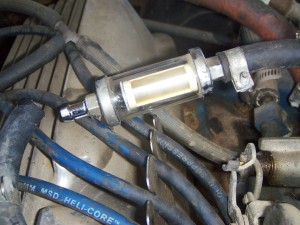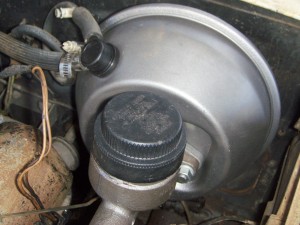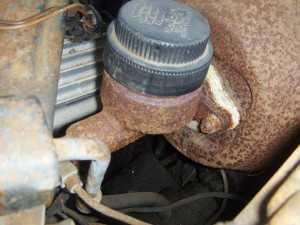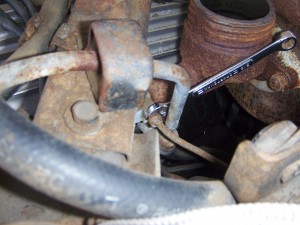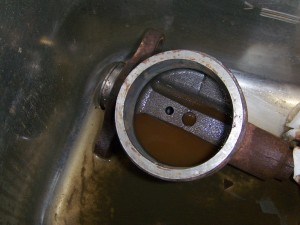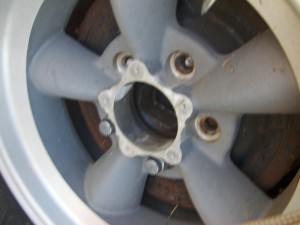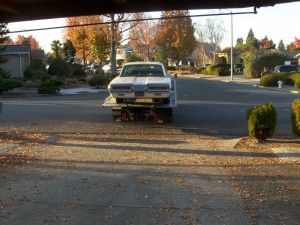I’ve never had the pleasure of siphoning gas before, but it sounded much easier than disconnecting a line at the tank and trying to drain it that way.
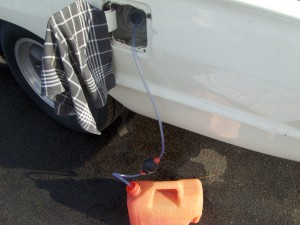
I bought a little pump siphon and set to work.
There wasn’t much gas in the tank, and it’s a long way down the fill tube. The tube that came with the siphon was all curled up in the package, a shape it liked just fine. Once it was inserted into the tank, it would curl back up and there was no telling how it was positioned. In the end, it took a couple of hours to siphon out about 6 gallons of fuel.
I had to sit in the street and hold the siphon absolutely still during this process, or I would loose suction in the hose, and as they say, I had to rinse and repeat. Sit very still in the roadway for a few hours and you will be surprised just how much traffic there is.
I poured in some fuel conditioner to help stabilize whatever might be remaining, then added 10 more gallons of fresh fuel. With the carburetor end of the fuel line stuck into an empty gas can, I cranked the engine long enough to pump about a half gallon through the system–enough, I think, to clear the lines of the old fuel.
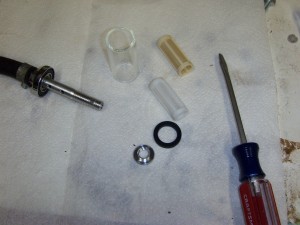
For good measure, I changed out the fuel filter–the old one was pretty clogged with the varnish from the old fuel.
I’d like to say that I turned the key and she fired right up. But no dice. In fact, I added some starting fluid, turned the key and it ran for a few seconds–once almost a minute–on its own before dying.
My guess at this point–and I’m strictly guessing here–is the that carburetor is fouled from the old gas, perhaps exacerbated by me running the stale fuel through it with abandon when I was able to start it earlier this month. A carb rebuild kit is on the way from New Jersey.

